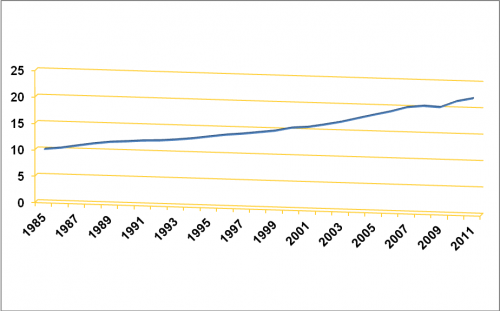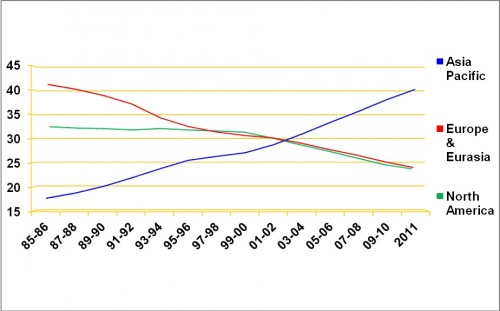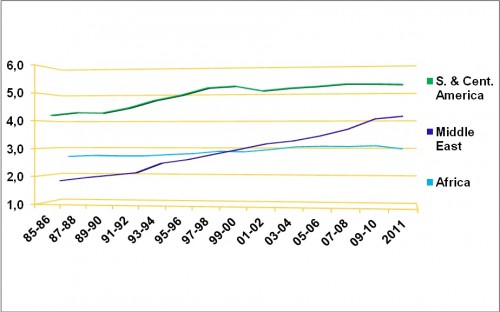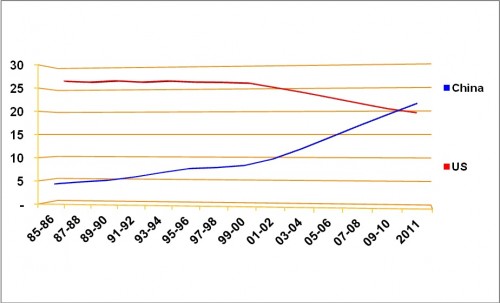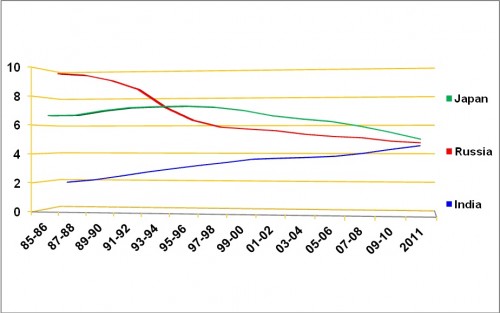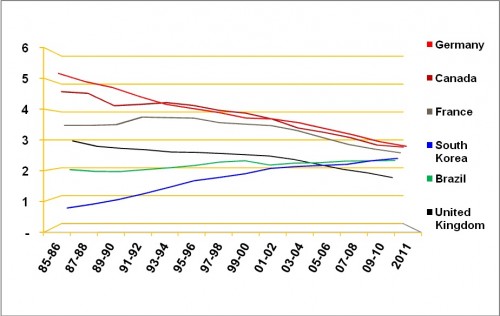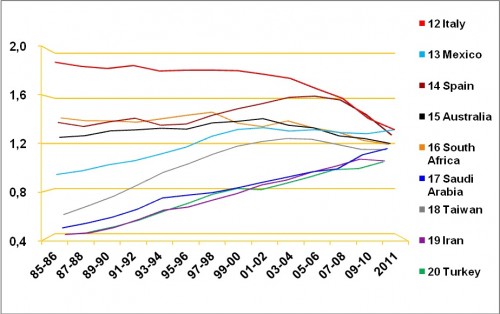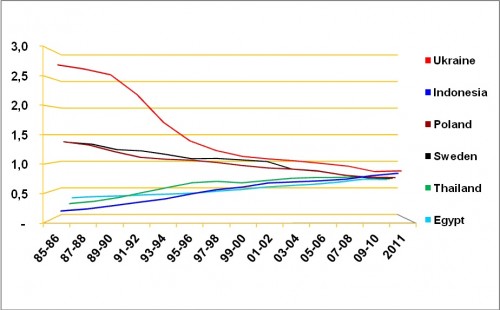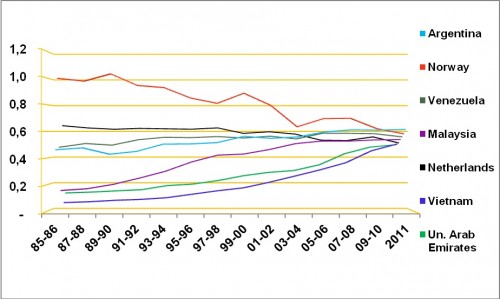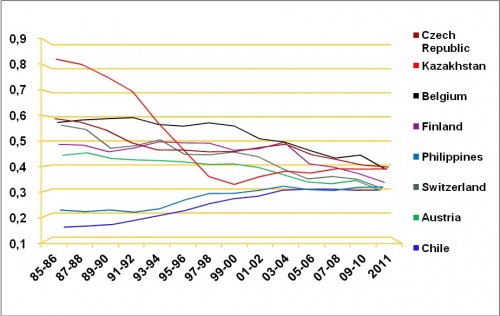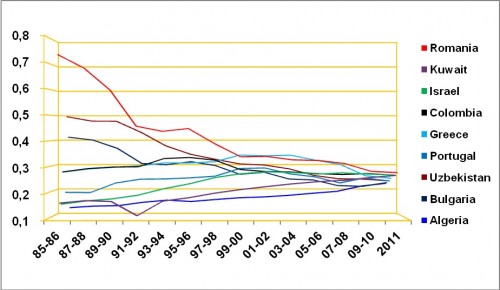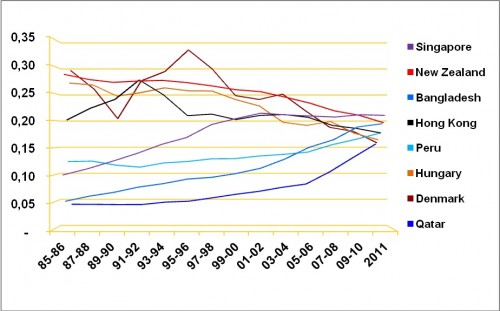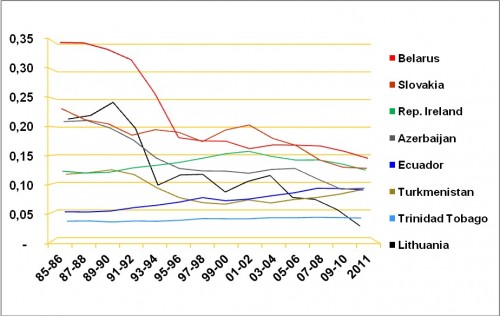Emerging Countries, Stagnant Countries – Part 4 – China Leads in Electric Energy
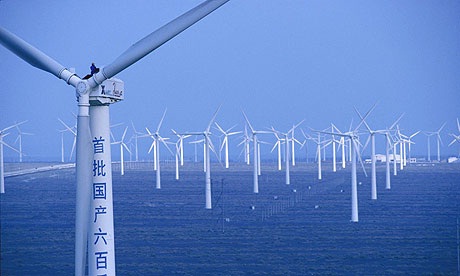
Every year the World Energy Statistics Magazine, specifically the British Petroleum’s “Statistical Review of World Energy,” undoubtedly the best world energy atlas, publishes in the month of June the statistical results obtained from the previous year on virtually all forms of energy produced and consumed throughout the world.
This article, published for the fourth consecutive year now at Metro Portal, www.metro.org.br, aims to reveal with the help of graphs and statistical charts the performance of key countries around the world in Electric Power Generation. This being an analysis of annual data, the title remains: “Emerging Countries, Stagnate Countries”. Part One was published in 2009 by Portal Metro with commentary available in Portuguese; in 2010 with commentaries in Spanish; and now a Part Three with data from up to 2010 with commentaries in English as well. This year of 2012 we are issuing Part Four with data applying to 2011.
Economists avidly believe that the Electric Power Generation is an excellent indicator of the economic vitality of a country or region, and that the economic importance of a country can be well reflected in the statistics of Electric Power Generation.
Unlike what occurred in 2009 when the total electricity generated in the world fell 0.9% (243 terawatt-hours, TWh) in relation to 2008 which was the first decline since 1982, in 2010 there was a significant recovery with a growth of 5.9%, the fastest growth since 1990 when this pattern began to followed by SRWE. In 2011 there was growth of 3.05%, from 21.36 to 22.02 PetaWatt-hours (1 PWh = 1012 kilowatt-hours).
In 2009 the Metro Portal highlighted the 21 top ranking countries and in 2010 expanded the analysis to the 64 largest. In 2011, the data for the 68 largest was presented with charts covering the 68 largest, and now in 2012 for the 67 largest.
Some background information:
1) The six continental regions are: North America, Central and South America, Europe and Eurasia, Middle East, Africa and Asia Pacific, which also covers Oceania.
2) Countries included in 2010 only: Vietnam, Israel, Trinidad Tobago and China-Hong Kong.
3) Country excluded in 2010: Iceland.
As in the previous articles, we used the biennium scale from 1990 on in order to facilitate the drafting and reading of the graphs. Only 2011 was isolated in order to highlight the latest effects. All data used is relative, i.e., the percentage of each block, region or country in relation to the total world count (=100%). Countries with increasing growth are expanding their relative global shares, while countries with decreasing growth are reducing their relative global shares.
Some general evidence can be detected upon interpretation of the statistics:
1) The big news of 2011 is that for the first time, China and the USA have switched roles; one is occupying the other’s place.
2) Countries with strongly increasing shares are:
a) The Asia Pacific region in China’s geographical area of influence,
b) The Middle East, especially by the positive effect of oil prices.
3) The moderate but sustainable growth of South America and Central Africa, the latter with lesser footing.
4) If China occupies the place formerly belonging to the USA, the three other regions together will occupy the positions lost by Europe-Eurasia;
5) There is a strong decline during the participation period of Eastern European countries and the former Soviet Union mainly in the 90’s, where in the 2000’s there was a slowing but continued downward trend.
6) It is also visible in the graphs that India will soon surpass Japan and Russia, assuming 3rd place globally. And finally, that Brazil and South Korea should soon exceed in the coming years the declining group which includes Germany, Canada and France.
Graphs
Electricity generation (%) – World = 100%
Source: British Petroleum-Statistical Review of World Energy – June 2012
Graph 1-World Electric power generation
1985-2011-petawatt-hours
Graph 2 – Continental Regions I
% – World = 100 – 1985-2011
Graph 3 – Continental Regions II
% – World = 100 – 1985-2011
Graph 4 – Countries – Group I
% – World = 100 – 1985-2011
Graph 5 – Countries – Group II
% – World = 100 – 1985-2011
Graph 6 – Countries – Group III
% – World = 100 – 1985-2011
Graph 7 – Countries – Group IV
% – World = 100 – 1985-2011
Graph 8 – Countries – Group V
% – World = 100 – 1985-2011
Graph 9 – Countries – Group VI
% – World = 100 – 1985-2011
Graph 10 – Countries – Group VII
% – World = 100 – 1985-2011
Graph 11 – Countries – Group VIII
% – World = 100 – 1985-2011
Graph 12 – Countries – Group IX
% – World = 100 – 1985-2011
Graph 13 – Countries – Group X
% – World = 100 – 1985-2011
Related Articles



